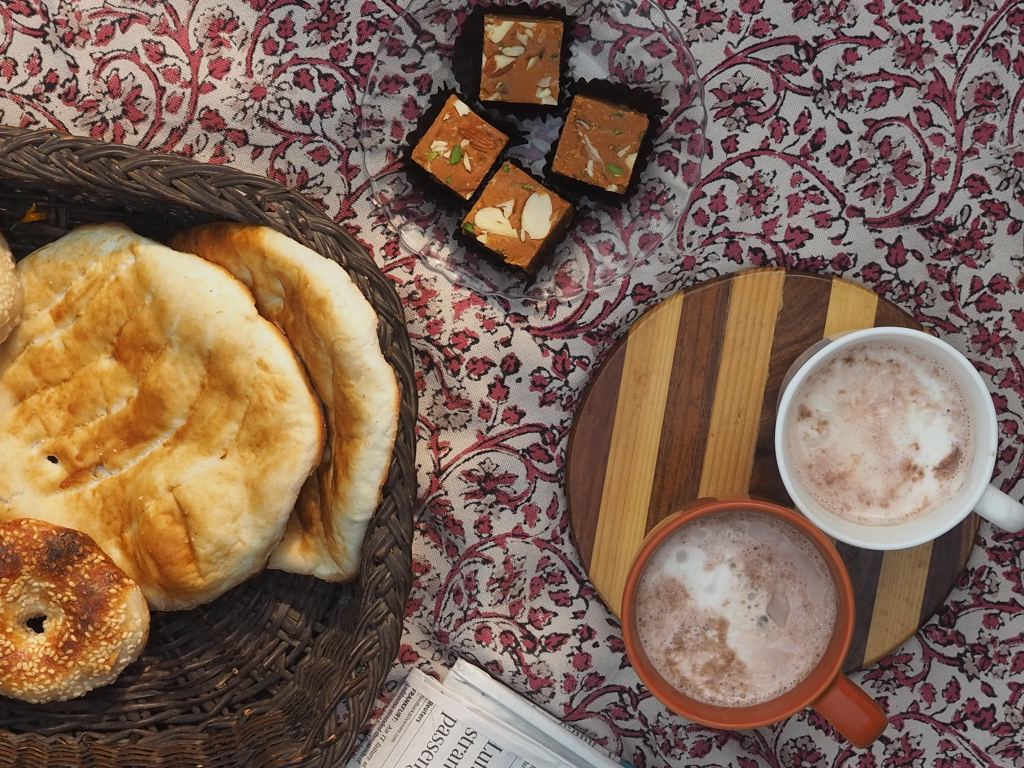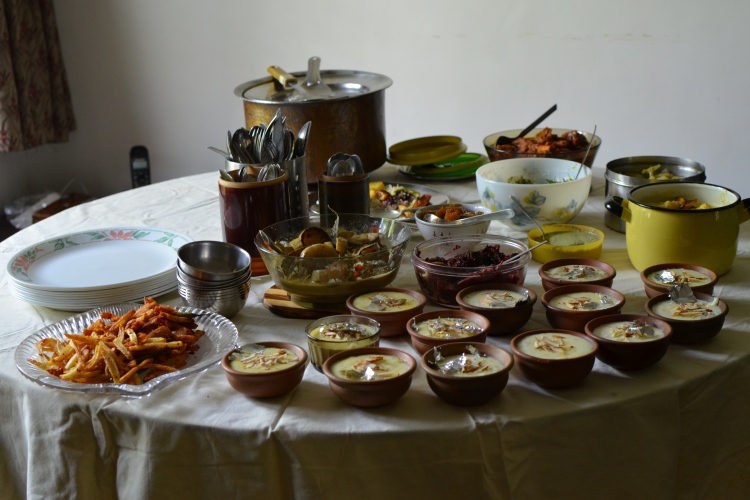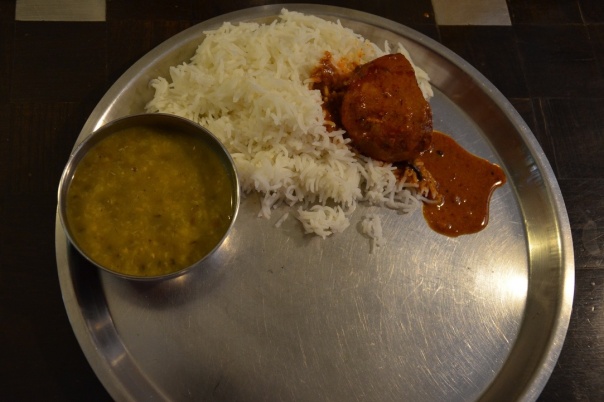
It’s Spring all around. There is a burst of colour in the garden – nasturtiums and poppies (oh, the gorgeous poppies) return every year in striking new shades like little miracles. Soon, it will be the turn of the street trees to shimmer – the Semal in March, and the Gulmohur in April. While the gold of mustard flowers is tuning into pungent seed, the breeze carries the heady fragrance of limes about me.
It is also Spring in Kashmir. Where it snows, where winter stretches for endless months, the season eponymous with rebirth, surely holds a special joy and renewed hope as the delicate Nargis (Daffodils) emerges out of the frozen ground, through the cover of fresh fallen snow. The almonds trees bud out and bloom, and a cheer spreads through the valley. My mother talks of annuals spring picnics to badamwari (almond orchards). If Japan has cherry blossoms, Kashmir has her badams.
In my father’s garden are two mango trees. When the almonds blooms in Kashmir, the mango does the same in Delhi – covering itself in panicles of thousands of sweet smelling flowers – aam ki bohr. So with everything screaming Spring! I bring to you a Kashmir-edition of the Spring Table – a Picnic in the Garden.
Read more: Spring Table: KashmirEvery time I announce a workshop, I feel nervous – what if no one signs up? Then I push the nagging thoughts to the side and focus instead on planning what I want to cook and share. It is always exciting to plan a new menu, a new dish, or a new class. I enjoy the interactions and it is humbling when the same people show up again and again. It seems like a community of sorts – we get together, we share – ideas and thoughts, and enjoy the wholesome food we cook together. The stimulating conversations are a bonus.
Spring Table: Kashmir
Join me in my Mum’s kitchen to cook Mutsch, one of Kashmir’s iconic dishes. In true Pandit-style we will not be using any onions. And only a couple of pods of garlic (completely optional, btw). Let’s slow down to enjoy Delhi’s fleeting Spring, brew some kahwa, bring out a basket of breads, watch the flowers grow, spread the dastatkhan, and have ourselves a Picnic Brunch in the Garden.
If you are not into cooking that much, you may hang about in the garden, kick off your shoes, lie down under the mango tree, read a book, and simply enjoy a picnic. There will be plenty to eat for vegetarians too. Come, join us for a laidback brunch. Bring your friends, young and old. Children may accompany parents as long as parents are in control 🙂 .
Koshur Saal, 2018











